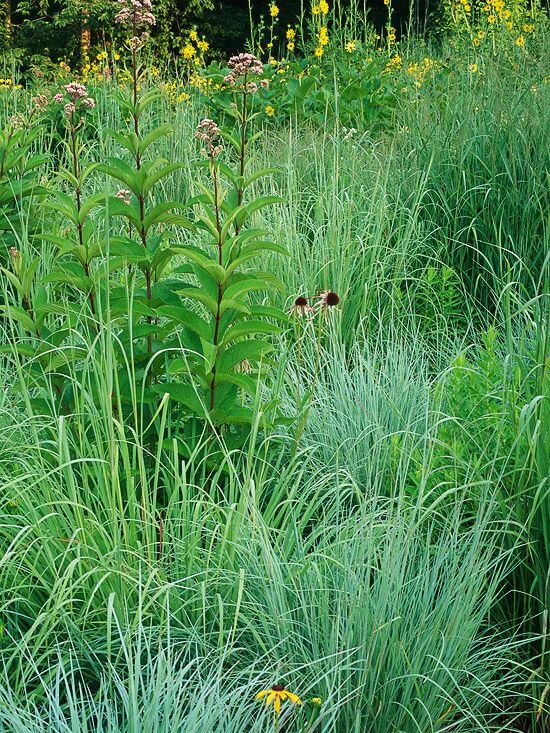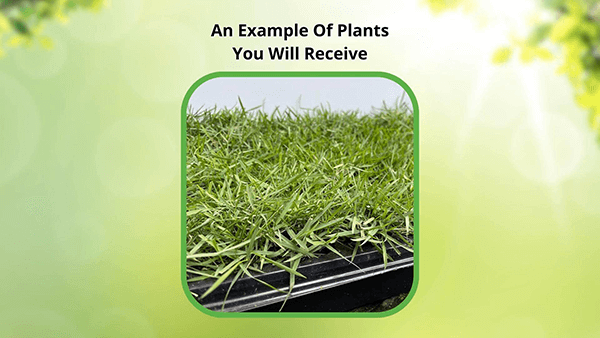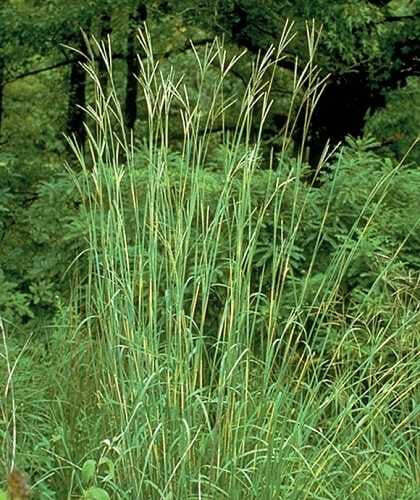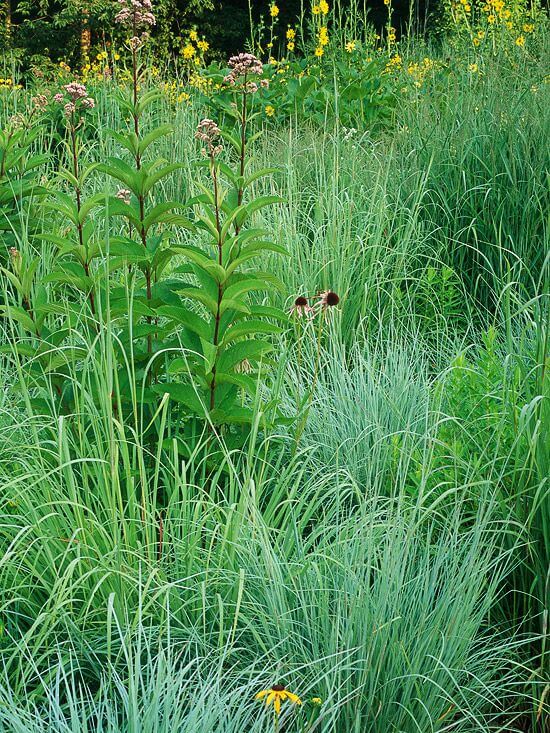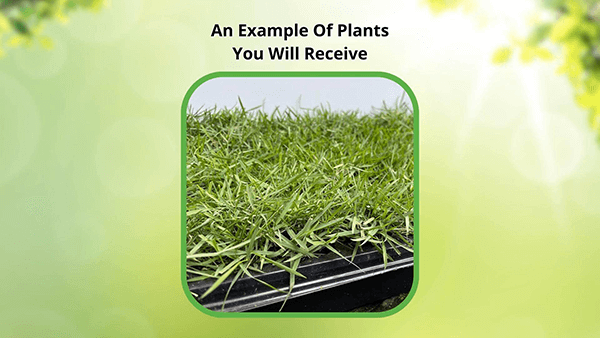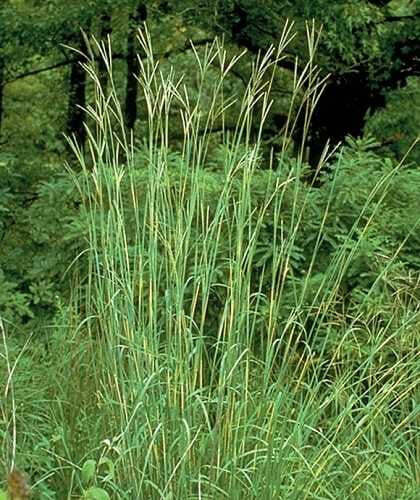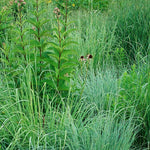6 Pack - Big Bluestem Grass
Big Bluestem Grass Is Exotic and Ornamental
It is a tall native grass with numerous landscaping benefits. This versatile and attractive plant is a critical component of prairie ecosystems and is now gaining popularity in residential and commercial landscapes. Here are some of the notable benefits of using Big Bluestem in landscaping:
The foliage displays a rich blue-green hue in spring and summer, creating a relaxed and calming effect.
- Drought Tolerance: One of the most significant advantages of this grass is its exceptional drought tolerance. Once established, this hardy grass can withstand periods of low water availability, making it an ideal choice for landscapes in arid regions or areas with water restrictions.
- Low Maintenance: It is relatively low maintenance compared to traditional turf grasses. Once established, it requires little to no irrigation, reducing water consumption and associated costs. It is also less susceptible to pests and diseases, minimizing the need for chemical treatments.
- Erosion Control: Its deep and extensive root system effectively stabilizes soil, preventing erosion on slopes and embankments. This makes it an excellent choice for erosion-prone areas and helps protect nearby water bodies from sediment runoff.
- Wildlife Habitat: This provides essential habitat for various wildlife species. The dense stands of grass offer cover and nesting sites for birds, small mammals, and insects. Additionally, the seeds and foliage serve as food sources for birds and other wildlife, contributing to biodiversity in the landscape.
- Carbon Sequestration: Native grasses like this are known to also remove potent sequester carbon dioxide from the atmosphere through photosynthesis. By incorporating these grasses into landscapes, we can contribute to carbon mitigation efforts and reduce the impact of greenhouse gases on the environment.
- Visual Appeal: This type of grass's tall and graceful foliage adds visual interest to landscapes throughout the year. In summer, the foliage exhibits a blue-green hue, which changes to copper and red tones in the fall, creating a stunning display of colors.
- Texture and Movement: The fine texture of Big Bluestem complements other landscape elements, such as flowers and shrubs, adding depth and contrast to the overall design. The grass sways gracefully in the breeze, creating a dynamic and animated landscape.
- Soil Improvement: As a native grass, Big Bluestem is well-adapted to the local soil conditions. Its deep root system improves soil structure and enhances nutrient cycling, promoting soil health.
- Reduced Invasive Species: By incorporating native grasses like Big Bluestem in landscapes, we can help suppress the growth of invasive plant species. The dense growth of native grasses outcompetes and prevents the establishment of invasive plants, contributing to ecosystem balance.
- Sustainable Landscaping: Incorporating Big Bluestem and other native plants into landscaping designs promotes sustainability and ecological balance. These plants have evolved to thrive in their local environments and require fewer resources, making them eco-friendly for landscaping projects.
In conclusion, Big Bluestem offers a wide range of benefits in landscaping, including drought tolerance, low maintenance, erosion control, wildlife habitat support, carbon sequestration, visual appeal, texture, soil improvement, and sustainability. By incorporating this native grass into landscapes, homeowners and landscape professionals can create beautiful, ecologically responsible, and resilient outdoor spaces.
Big Bluestem Grass, or Andropogon gerardii, is a magnificent native grass species embodying the American prairie's essence. This striking perennial grass is renowned for its towering stature and remarkable ecological significance, capturing the imagination of botanists, ecologists, and nature enthusiasts alike. As one of the iconic "Big Four" grasses that dominated the tallgrass prairies of North America, alongside Indiangrass, Switchgrass, and Little Bluestem, Big Bluestem has left an indelible mark on the continent's natural history.
Standing proudly at heights of up to 8 feet, it is majestic in its native habitats. Its tall, slender stems shoot up from a network of rhizomes, forming dense clumps that sway gracefully in the wind. The grass's distinctive blue-green foliage is a testament to its name, derived from its distinct bluish hue during the growing season. The leaves are long, narrow, and pointed, with a unique arrangement resembling an inverted canoe. This distinctive leaf arrangement is a crucial identification feature that differentiates it from other grasses.
Big Bluestem Grass Is Stunning In The Fall
It undergoes a stunning transformation as summer turns to fall, revealing its vibrant autumnal colors. The once-green blades shift to crimson, copper, and deep burgundy shades, creating a mesmerizing tapestry of warm hues across the prairie landscape. This transformation adds to its aesthetic appeal and plays a crucial role in the prairie ecosystem by providing forage for wildlife during the colder months.
Big Bluestem Grass Provides Food For The Birds
It is a vital component of prairie ecosystems, offering food and shelter to many wildlife species. Its dense stands provide nesting sites and cover for ground-nesting birds like the Northern Bobwhite and Eastern Meadowlark. Meanwhile, the seeds are a valuable food source for birds like sparrows and quail, and the sturdy stems shelter small mammals and insects.
Beyond its ecological importance, it carries a rich cultural history. Indigenous peoples of North America used it for various purposes, including crafting baskets and mats and even as a traditional remedy for various ailments.
In summary, Big Bluestem Grass symbolizes the American prairie's grandeur and resilience. Its towering presence, distinctive appearance, and ecological significance make it a living testament to the untamed beauty of native grasslands, enriching both the landscape and the human spirit with its enduring grace.
Buy Big Bluestem Online at TN Nursery
This Is How Your Plants Will Look upon Delivery
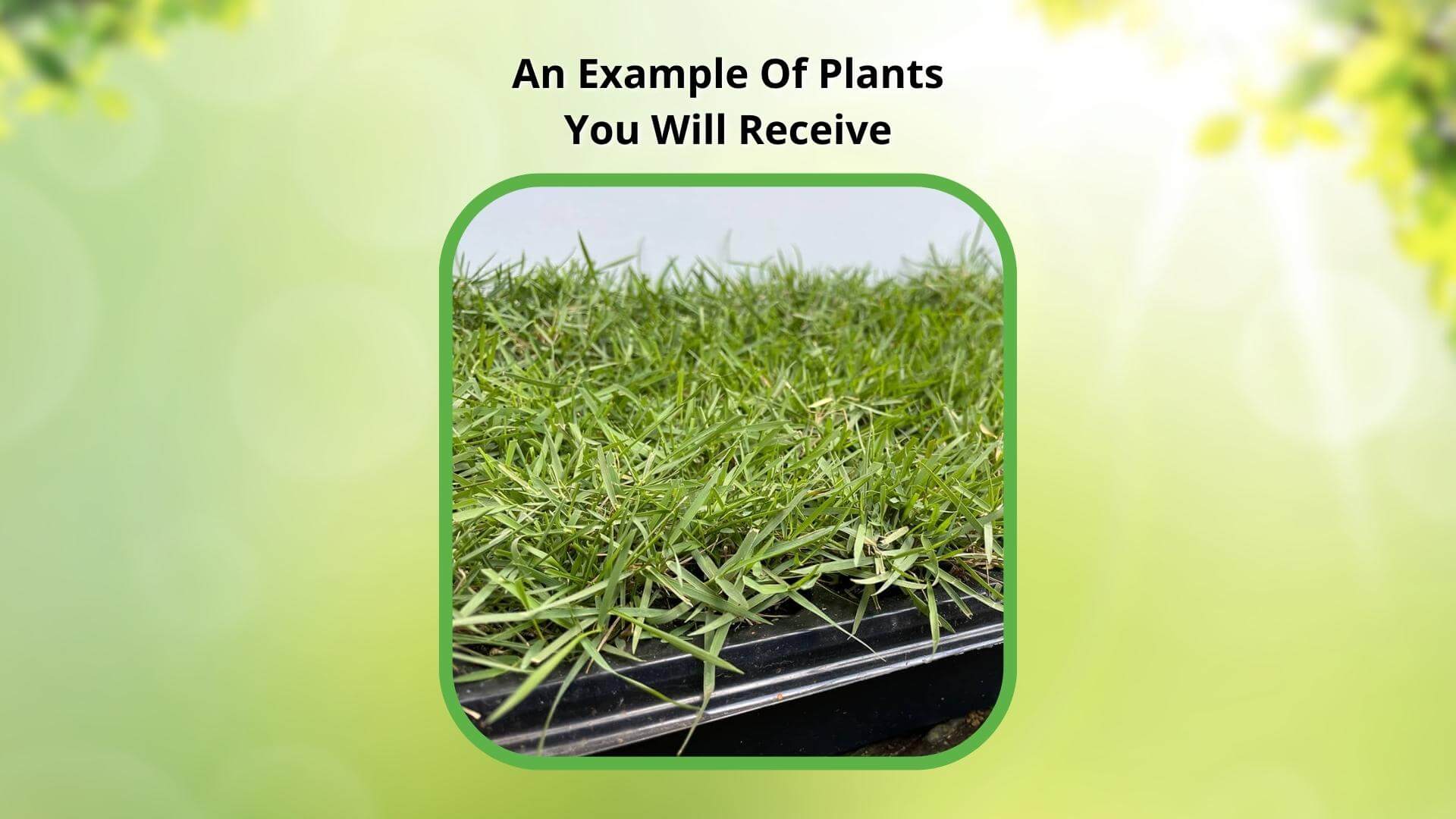
Quantity
In Stock
Sold out
